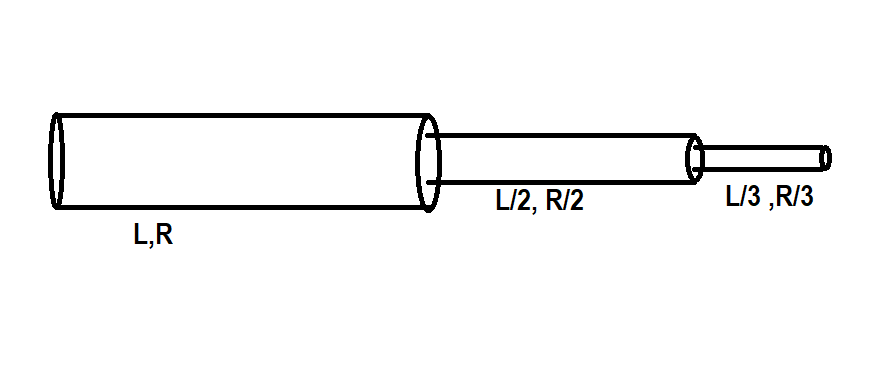Question
Question: Three capillaries of length \(L,{L}/{2}\;\) and \({L}/{3}\;\) are connected in series. Their radii a...
Three capillaries of length L,L/2 and L/3 are connected in series. Their radii are r,r/2 and r/3 respectively. Then, if steam-line flow is to be maintained and the pressure across the first capillary is p, then the
A. Pressure difference across the ends of second capillary is 8p
B. Pressure difference across the third capillary is 43p
C. Pressure difference across the ends of the second capillary is 16p
D. Pressure difference across the third capillary is 56p
Solution
Assuming the fluids are incompressible, the flow through each capillary must be an equivalent. Also, the sum of the pressures across each capillary must equal the entire pressure. So, calculate the rate of flow of liquid of each capillary and then put them equal and then calculate pressure.
Formula used:
Rate of flow in series combination is same and it is given by:
dtdQ=8ηLπpr4
Where:
Q- rate of flow of liquid
P- pressure difference in between two ends of capillary
L- length of capillary
r- radius
Complete step by step answer:
As capillaries are joined in series:
So the rate of flow (dtdQ) will be the same for every capillary.
8ηLπpr4=8η(L/2)πp′(r/2)4=8η(L/3)πp′(r/3)4
Pressure difference across the ends of second capillary:
p′=8p
And across the ends of third capillary
p′=27p

So, the correct answer is “Option A”.
Additional Information:
Capillarity is the ability of a liquid to flow in narrow spaces without the assistance of, or even con to, external forces like gravity. The effect is often seen within the drawing from liquids between the hairs of a paint-brush, during a thin tube, in porous materials like paper and plaster, in some non-porous materials like sand and liquefied carbon fiber, or during a biological cell. It occurs due to intermolecular forces between the liquid and surrounding solid surfaces. If the diameter of the tube is sufficiently small, then the mixture of physical phenomenon (which is caused by cohesion within the liquid) and adhesive forces between the liquid and container wall act to propel the liquid.
Note:
If two capillaries are joined in parallel, the pressure difference across them is going to be the same, but rates of flow would vary.
P=P1=P2V=V1+V2R1=R11+R21
